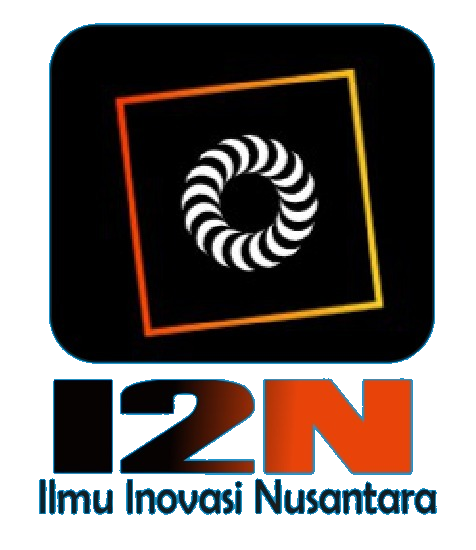A Review of Studies on the Effects of Blood Flow Restriction Training on Endurance Athletes
DOI:
https://doi.org/10.58557/(ijeh).v5i4.358Kata Kunci:
Blood Flow Restriction Training (BFRT); half-marathon; lower limb strength; mass elite athletes; running economyAbstrak
In the context of the Healthy China Strategy and the national goal of building a sports power, marathon and half-marathon events are developing rapidly, reflecting a growing public enthusiasm for endurance sports. This momentum has led to a rising demand among mass elite athletes—non-professional but high-performing runners—for efficient and scientifically grounded training models. However, traditional high-intensity training methods often pose risks of overtraining or injury. In this context, Blood Flow Restriction Training (BFRT), known for its “low-load-high-benefit” profile, emerges as a promising alternative. The objective of this study is to systematically explore the conceptual framework and physiological mechanisms of BFRT, assess its current application in endurance sports both domestically and internationally, and evaluate its potential benefits and limitations specifically for mass elite half-marathon athletes. This study adopts a literature review methodology, integrating empirical findings from sports science databases, journal publications, and expert analyses to map the research landscape surrounding BFRT. Findings indicate that BFRT can significantly enhance lower limb muscle strength, capillarization, and endurance performance when used appropriately. However, research involving mass elite half-marathon athletes remains limited, with gaps in long-term intervention studies, individualized training parameters, and understanding of BFRT's integration with traditional endurance programs. The future research prioritizes longitudinal studies to examine BFRT’s sustained effects, optimize cuff pressure, frequency, and duration specific to endurance demands, and investigate its synergistic potential when combined with conventional aerobic training. These efforts are essential to ensure the safe, targeted, and effective implementation of BFRT in endurance sports development
Referensi
Barnes, K. R., & Kilding, A. E. (2015). Strategies to improve running economy. Sports Medicine, 45, 37–56.
Bjørnsen, T., Wernbom, M., Kirketeig, A., et al. (2018). Type 1 muscle fiber hypertrophy after blood flow–restricted training in powerlifter.
Central Committee of the Communist Party of China & State Council. (2016, October 25). Outline of the "Healthy China 2030" plan [EB/OL]. https://www.gov.cn/zhengce/2016-10/25/content_5124174.htm
Chinese Athletics Association. (2023, March 22). 2023 China road running events blue book [EB/OL]. https://www.runchina.org.cn/#/notice/industry/detail/GG202437002
Chinese Athletics Association. (2024, April 4). 2024 China road running events blue book [EB/OL]. https://www.runchina.org.cn/#/news/official-news/detail/TZ202564010
Chinese Athletics Association. (2025, March 22). Implementation measures for rating mass runners in road running events of the Chinese Athletics Association [EB/OL]. https://www.runchina.org.cn/#/policy-regulations/management-measures/detail/TZ202564009
Davids, C. J., Roberts, L. A., Bjørnsen, T., et al. (2023). Where does blood flow restriction fit in the toolbox of athletic development? A narrative review of the proposed mechanisms and potential applications. Sports Medicine, 53(11), 2077–2093.
Denadai, B. S., de Aguiar, R. A., de Lima, L. C. R., et al. (2017). Explosive training and heavy weight training are effective for improving running economy in endurance athletes: A systematic review and meta-analysis. Sports Medicine, 47, 545–554.
Evans, C., Vance, S., & Brown, M. (2010). Short-term resistance training with blood flow restriction enhances microvascular filtration capacity of human calf muscles. Journal of Sports Sciences, 28(9), 999–1007.
Ferguson, R. A., Hunt, J. E. A., Lewis, M. P., et al. (2018). The acute angiogenic signalling response to low-load resistance exercise with blood flow restriction. European Journal of Sport Science, 18(3), 397–406.
Ferguson, R. A., Mitchell, E. A., Taylor, C. W., et al. (2021). Blood-flow-restricted exercise: Strategies for enhancing muscle adaptation and performance in the endurance-trained athlete. Experimental Physiology, 106(4), 837–860.
Fouré, A., Nordez, A., & Cornu, C. (2010). Plyometric training effects on Achilles tendon stiffness and dissipative properties. Journal of Applied Physiology, 109(3), 849–854.
Gao, W., Feng, X., & Gu, D. (2019). Meta-analysis of the effects of concurrent endurance and strength training on running economy and endurance performance-related indicators of long-distance runners. China Sport Science, 39(9), 68–81. https://doi.org/10.16469/j.css.201909008
General Administration of Sport of China & 11 Other Ministries. (2018, January 12). Development plan for marathon sports industry [EB/OL]. https://www.sport.gov.cn/n315/n330/c843383/content.html
Gore, C. J., Clark, S. A., & Saunders, P. U. (2007). Nonhematological mechanisms of improved sea-level performance after hypoxic exposure. Medicine & Science in Sports & Exercise, 39(9), 1600–1609.
Granata, C., Jamnick, N. A., & Bishop, D. J. (2018). Training-induced changes in mitochondrial content and respiratory function in human skeletal muscle. Sports Medicine, 48(8), 1809–1828.
Groennebaek, T., Jespersen, N. R., Jakobsgaard, J. E., et al. (2018). Skeletal muscle mitochondrial protein synthesis and respiration increase with low-load blood flow restricted as well as high-load resistance training. Frontiers in Physiology, 9, 1796.
Hunt, J. E. A., Galea, D., Tufft, G., et al. (2013). Time course of regional vascular adaptations to low load resistance training with blood flow restriction. Journal of Applied Physiology, 115(3), 403–411.
Jones, A. M., & Carter, H. (2000). The effect of endurance training on parameters of aerobic fitness. Sports Medicine, 29, 373–386.
Klausen, K., Andersen, L. B., & Pelle, I. (1981). Adaptive changes in work capacity, skeletal muscle capillarization and enzyme levels during training and detraining. Acta Physiologica Scandinavica, 113(1), 9–16.
Kong, J., Xie, Y., Chen, S., et al. (2024). Blood flow restriction training intervenes in sarcopenia in the elderly: Biological mechanisms and application scheme recommendations. Chinese Journal of Tissue Engineering Research, 28(23), 3743–3750.
Larkin, K. A., Macneil, R. G., Dirain, M., et al. (2012). Blood flow restriction enhances post–resistance exercise angiogenic gene expression. Medicine & Science in Sports & Exercise, 44(11), 2077.
Liu, L., Li, J., Zhao, D., et al. (2017). Application of blood flow restriction training in rehabilitation training of patients after knee arthroscopy. Journal of Nursing Science, 32(24), 82–84.
Midgley, A. W., McNaughton, L. R., & Jones, A. M. (2007). Training to enhance the physiological determinants of long-distance running performance: Can valid recommendations be given to runners and coaches based on current scientific knowledge? Sports Medicine, 37, 857–880.
Nielsen, J. L., Aagaard, P., Bech, R. D., et al. (2012). Proliferation of myogenic stem cells in human skeletal muscle in response to low‐load resistance training with blood flow restriction. The Journal of Physiology, 590(17), 4351–4361.
Nielsen, J. L., Frandsen, U., Jensen, K. Y., et al. (2020). Skeletal muscle microvascular changes in response to short-term blood flow restricted training—Exercise-induced adaptations and signs of perivascular stress. Frontiers in Physiology, 11, 556.
Patterson, S. D., Hughes, L., Warmington, S., et al. (2019). Blood flow restriction exercise: Considerations of methodology, application, and safety. Frontiers in Physiology, 10, 533.
Pignanelli, C., Petrick, H. L., Keyvani, F., et al. (2020). Low-load resistance training to task failure with and without blood flow restriction: Muscular functional and structural adaptations. American Journal of Physiology–Regulatory, Integrative and Comparative Physiology, 318(2), R284–R295.
Ren, Z. (2010). Study on the work of human lower limb muscles affecting running economy. China Sport Science, 30(1), 86–97. https://doi.org/10.16469/j.css.2010.01.012
Saunders, P. U., Telford, R. D., Pyne, D. B., et al. (2009). Improved running economy and increased hemoglobin mass in elite runners after extended moderate altitude exposure. Journal of Science and Medicine in Sport, 12(1), 67–72.
State Council. (2021, July 18). National fitness plan (2021–2025) [EB/OL]. https://www.gov.cn/gongbao/content/2021/content_5631816.htm
Teixeira, E. L., Barroso, R., Silva-Batista, C., et al. (2017). Blood flow restriction increases metabolic stress but decreases muscle activation during high-load resistance exercise. Muscle & Nerve, 57(1), 107–111.
Tollefson, L. V., Schoenecker, J., Solie, B., et al. (2024). Lower extremity blood flow restriction training in athletes significantly improves strength-related outcomes in 58% of studies compared to non-BFR control. Arthroscopy: The Journal of Arthroscopic & Related Surgery.
Wei, J., Li, B., Yang, W., et al. (2019). Application effects and mechanisms of blood flow restriction training. China Sport Science, 39(4), 71–80. https://doi.org/10.16469/j.css.201904008
Yamamoto, L. M., Lopez, R. M., Klau, J. F., et al. (2008). The effects of resistance training on endurance distance running performance among highly trained runners: A systematic review. The Journal of Strength & Conditioning Research, 22(6), 2036–2044.
Yan, Y., & Guo, L. (2018). Study on the effect of running with lower limb compression on the sports performance of tennis players. Journal of Southwest China Normal University (Natural Science Edition), 43(6), 167–175. https://doi.org/10.13718/j.cnki.xsxb.2018.06.027
Yang, K., Chee, C. S., Abdul Kahar, J., et al. (2024). Effects of blood flow restriction training on physical fitness among athletes: A systematic review and meta-analysis. Scientific Reports, 14(1), 16615.
Yasuda, T., Abe, T., Brechue, W. F., et al. (2010). Venous blood gas and metabolite response to low-intensity muscle contractions with external limb compression. Metabolism, 59(10), 1510–1519.
Yasuda, T., Fukumura, K., Fukuda, T., et al. (2014). Effects of low intensity, elastic band resistance exercise combined with blood flow restriction on muscle activation. Scandinavian Journal of Medicine & Science in Sports, 24(1), 55–61.
Zhang, J., Wei, H., Liu, R., et al. (2022). Effects of low-intensity resistance training combined with blood flow restriction and high-intensity resistance exercise on explosive power of male sprint athletes. Journal of Guangzhou Sport University, 42(6), 23–31. https://doi.org/10.13830/j.cnki.cn44-1129/g8.2022.06.002
Snyder, H. (2019). Literature review as a research methodology: An overview and guidelines. Journal of Business Research, 104, 333–339.
Thomas, J., & Harden, A. (2008). Methods for the thematic synthesis of qualitative research in systematic reviews. BMC Medical Research Methodology, 8(1), 45. https://doi.org/10.1186/1471-2288-8-45
Unduhan
Diterbitkan
Cara Mengutip
Terbitan
Bagian
Lisensi
Hak Cipta (c) 2025 Junjie Xiao, Daoling Fu

Artikel ini berlisensiCreative Commons Attribution-ShareAlike 4.0 International License.














